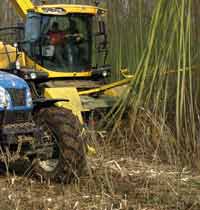Emissions from biomass can be variable

The Environment Agency has warned that biomass crops will only deliver greenhouse gas savings overall if they are grown in environmentally sustainable ways.
In a report, Biomass – carbon sink or carbon sinner?, the agency says that using energy crops to produce electricity and heat could play an important role in reducing greenhouse gases – but only if good practice is followed.
It estimates that ploughing up permanent grassland to grow biomass using nitrogen fertilisers can be more damaging in terms of carbon dioxide emissions than burning gas to generate electricity.
This is particular the case when energy is expended processing biomass into fuel pellets and then the fuel is transported thousands of miles and burned to generate electricity only (rather than combined heat and power).
Yet grown in the right way, biomass crops can deliver up to 98% less emissions than using coal and could save over 3mt of carbon dioxide per year by 2020.
Tony Grayling, head of climate change and sustainable development at the Environment Agency, said: “The biomass heat and power sector can play an important role in helping the UK meet its renewable energy and greenhouse gas commitments but only if it meets high standards.
“We want to ensure that the sector’s growth is environmentally sustainable and that the mistakes made with biofuels are avoided, where unsustainable growth has had to be curbed.
“The government should ensure that good practice is rewarded and that biomass production and use that does more harm than good to the environment does not benefit from public support.”
Biomass heat and power is currently the largest source of renewable energy in the UK accounting for 2.3% of the UK’s electricity generation and 1% of heat.
